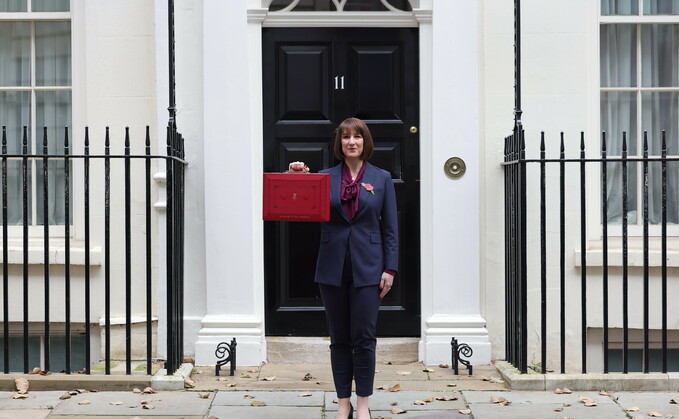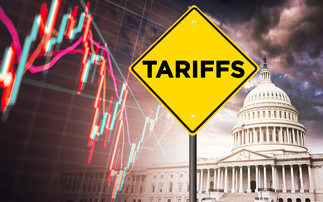
Picture: Kirsty O’Connor / Treasury
Pensions and death benefits passed on will be subject to inheritance tax (IHT) from 2027, with both defined contribution and defined benefit schemes impacted, chancellor Rachel Reeves has confirmed in today’s (30 October) Budget.
The introduction of pension freedoms in 2015 removed a 55% charge for pensions funds which remained unused at death and the abolition of the Lifetime Allowance in March 2023 removed the cap on the amount of tax-relievable pension savings an individual can accumulate over their lifetime.
The government said this meant that individuals can accumulate unlimited tax-free savings in their pension, draw on other means to fund their retirement and leave their unused pension assets to be inherited by beneficiaries without any IHT charge.
Today's Budget included a measure to make most unused pension funds and death benefits subject to Inheritance Tax from 6 April 2027 - a move the government said would align their tax treatment with other types of inherited assets and removing the incentive to use pensions as a tax-planning vehicle for wealth transfer after death.
Reeves said: "We will close the loophole created by the previous government, made even bigger when the lifetime allowance was abolished, by bringing inherited pensions into inheritance tax from April 2027."
Changes to how pensions were treated for IHT purposes were widely speculated ahead of the Autumn Budget.
The Society of Pension Professionals welcomed the move. Chair of the organisation's tax group Steve Hitchiner said: "The chancellor's announcement about pensions being subjected to IHT is not entirely unexpected, indeed the SPP highlighted this possibility in its Pensions Tax report earlier this month.
"At present, a lump sum can be paid to an individual's beneficiaries tax-free, up to £1,073,100. This is anomalous to the payment of a dependant's pension, which is usually taxed as income.
"Pensions were never intended as vehicles for IHT planning, so overall this makes sense, and is a more attractive solution for raising revenue than many of the speculated alternatives such as reforming pensions tax relief or imposing national insurance contributions on employer pension contributions. However, it will be important to see the detail and how this will interact with the practicalities of different pension arrangements."
The government said including unused pension funds and death benefits payable from a pension in the value of estates for IHT purposes would raise £640m in the 2027/28 tax year; £1.34bn in 2028/29 and £1.46bn in 2029/30.
The Treasury also published a technical consultation on the processes required to implement these changes for UK registered pension schemes. In the consultation, the Treasury said pension scheme administrators (PSAs) would become liable for reporting and paying any inheritance tax due on unused pension funds and death benefits.
The consultation said some individuals with defined benefit schemes may also be impacted with regards to death benefits - noting lump sum death benefits may now be included in estates for IHT purposes, with the PSA would be liable to pay IHT before paying the money to beneficiaries.
The ‘unspent pensions pots' being targeted by the IHT proposals would also include DC benefits being paid as income to a dependant through an annuity or a drawdown facility.
Authorised pension death benefits to be included in the value of an individual's estate for IHT from 6 April 2027
How the inheritance tax might be calculated and paid by pension scheme administrators
In its consultation, the government sets out a number of examples of how the new rules might work in practice.
In one, it cites the example of James, the pension scheme administrator of a scheme, of which Elizabeth is a member.
Sam, the personal representative for Elizabeth's estate, notifies James that Elizabeth has died.
James writes to Sam to inform him of the value of Elizabeth's unused pension funds – also asking whether there will be any IHT payable on this amount.
Sam has been gathering all the information about the value of other elements in the estate. He enters this information, including the value of the unused pension funds, into the calculator on gov.uk, which confirms that IHT is payable and that an inheritance tax account must be submitted to HMRC through a form IHT400. The calculator output also sets out how the nil rate bands should be apportioned across different elements of the estate.
Sam notifies James of the amount of nil-rate band to be set against the unused pension funds, using a HMRC form provided for this purpose. James calculates the amount of Inheritance Tax due on the unused pension funds using the details provided on the form submitted by Sam. James reports this to HMRC and pays the tax due on the unused pension funds. James can now progress with payment of the remaining unused pension funds to the beneficiaries in the usual way.
A version of this story first appeared on PP's sister title Professional Adviser







